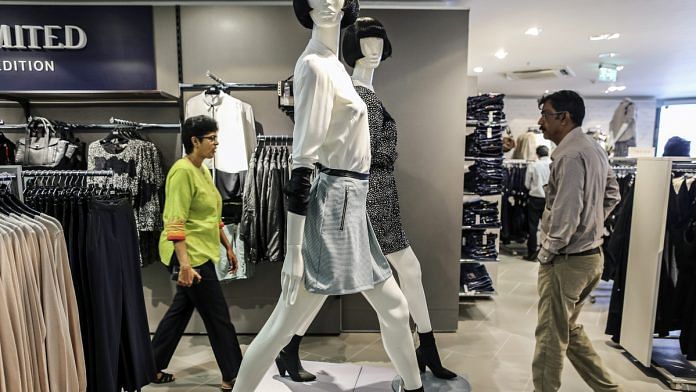Did you know your low-cost H&M crop tops and ripped jeans are ruining the planet?
And what has fashion’s response to this problem been? Sustainable fashion. But similar to how organic food was quick to become an elite trend, the sustainable fashion movement also begs the question of whether it is meant for classes or the masses.
So instead of supporting a whole new ecosystem of consumption, we should instead focus our energies, and wallets, on circular fashion.
Also read: Indians talking mental health aren’t ‘millennial snowflakes’. Time for bosses to catch up
Evils of fast fashion
It’s 2020, and thanks to several information campaigns and documentaries like ‘The True Cost’, we now know about the ‘evils’ of fast fashion. In case you missed the memo, about 8.1 per cent of global climate pollution can be attributed to the textile and apparel industry, 80 per cent of the world’s textile waste goes into landfills and 20 per cent of industrial water pollution is due to global garment manufacturing. Add to this, 60 per cent more clothing with shorter life cycles are purchased today as compared to 2000.
Sustainable fashion — an umbrella term that has come to signify fair-trade practices, ethically sourced materials, eco-friendly dyes, better relationships with karigars or craftsperson, transparent and leaner supply changes, use of upcycled materials…The list is truly endless, but the term remains vaguely defined and loosely used.
In this context, the onus has shifted to consumers to make the “right choice” and consume wisely.
Compared to how enticingly cheap fast fashion is, most products within this segment seem unaffordable to a layperson. Furthermore, as thousands of indie-brands jump on the bandwagon, and mega-corporations like H&M and Zara too claim to adopt sustainable practices, an entire alternative eco-system seems to have been created.
But in reality, shouldn’t we be focusing on a more circular economy of consumption — one that is a departure from the conventional ‘take-make-dispose’ approach to one that emphasises cyclical consumption, reuse, rethinking ownership entirely?
Also read: Personal, not religious: Why people need to stop asking me about my knee-length hair
Circular consumption and Indians
In one sense, Indians have always practiced circular consumption. Wastage has always been looked down upon, reuse comes second nature to most lower- and middle-class homes and traditional kabadiwalas have for long been the most sophisticated and committed recyclers. But as our economy has opened up over the years, especially when global fast fashion chains hit newly built malls in every second one or two-tier city, aspirations have moved toward buying newer and better things constantly.
In Europe, to counter fast fashion consumption many only buy vintage or second-hand clothes from flea markets and second-hand stores. Netherlands’ reuse centres — giant warehouses that house everything from kitchenware, furniture, motorcycle parts, toys to clothes — are being replicated across different parts of the world.
India, too, needs to foster business models that keep clothes in use for longer through practices like sharing, rental, swapping and resale of clothes. High-end vintage stores, like antique furniture stores, are starting to become more popular in India. Some online barter/resell forums and apps, and many startups trying to create tech adaptations of the traditional kabadiwala model of door to door collection, segregation and recycle/reuse are also coming up.
But few of these really aim at the masses and that middle-class aspiration that equates consumption with prosperity and success. Yes, the fashion industry should keep developing materials that are safe and renewable, solutions for older clothes to be converted into new, and keep finding ways to make production environmentally friendly and efficient. But in the meantime — let’s just find ways to stop buying more stuff in the first place.




We can provide upcycling service to big brand
Plz do visit my locality n u wil get to see that how they are really getting effected from manufacturing denim pants or any denim garment. N people here are 0 concerned about the global effects. N Govt busy on other matters I guess